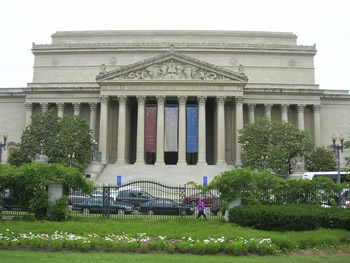Strategies for Cutting the Water Bill and Improving Efficiency in Municipalities

Water is expensive and only getting more so. Municipalities are responsible for lots of outdoor space, from the landscape around city buildings to parks, traffic islands, roadsides and more. Cities are seemingly forever in a budget crunch, making the high cost of water especially problematic.
Reducing the amount of water used and the resources required to manage irrigation can lower costs and improve efficiency. Most importantly, any monies saved can be redirected to other civic endeavors.
Smart Irrigation Controllers Offer Fast Payback
“An easy way that leading companies have used to reduce landscape water consumption is replacing conventional sprinkler system timers with “smart” irrigation controllers.”
GreenBiz, A Low-Risk Green Initiative with a Fast Payback
The ROI for a smart irrigation solution is usually around two years, making it a project with one of the fastest payback periods a municipality can undertake. Depending on how much water is currently being used, it can take even less time to achieve payback. On top of the direct savings from lower water costs, there is also a host of indirect savings, from labor savings to less money spent replacing plants, longer life for hardscape and paved surfaces, eligibility for water rebates and even less fertilizer to purchase.
The city of Santa Clarita achieved immediate budget relief by reducing the cost of irrigating by as much as 40 percent. Salem City, Utah saved nearly one million gallons of water in just 180 days.
The Cost of Overwatering
Most landscape is overwatered. By reducing overwatering, you’ll do more than lower water bills. You’ll:
- Improve plant health and longevity
- Lower the risk of slope or foundation damage due to soil consolidation, and reduce the chance of mold developing
- Reduce unhealthy fertilizer runoff
- Reduce labor expenses since less time will be spent managing irrigation and fewer site visits will be required.
- Reduce waste, conserving precious water resources
Staff Productivity
“It feels as though we added a new staff member to our team.”
Mike Del Campo, Parks Supervisor, City of Santa Rosa
Older and less sophisticated irrigation controllers are basically timers. They run sprinklers on a clock, rain or shine. Changing the schedule means sending someone to the location of each controller and manually modifying it. Many modern controllers, through a variety of methods, determine the amount of water based on plant needs and local weather conditions and automatically schedule watering as appropriate. Some offer central management capabilities, allowing for control from a web browser, reducing the number of site visits required and dramatically speeding up time spent on maintenance. Since grounds and facilities professionals tend not to sit at a desk, mobile device applications provide a way to manage alerts and notifications, change scheduling and even shut off water in an emergency to avoid catastrophic damage and water loss, all from a smartphone.
The Santa Rosa Parks Department eliminated driving to sites on a daily basis to perform routine checks, schedule changes, and maintenance. In addition, they reduced team overtime and eliminated many weekend calls. Because of HydroPoint’s alerts and notifications, they’re immediately notified of exactly what is awry, and, using the remote system access, they’ve saved labor hours and dollars.
Let’s Not Forget About the Importance of Conservation
There’s no doubt about it – our water supplies are dwindling. In response, many municipalities have imposed restrictions and regulations around water use. Reducing water consumption is necessary for municipalities to save money, to help save the environment and to show the community that it can be done without sacrificing the beauty citizens crave.“By leading by example when it comes to conservation, Salem is demonstrating that sustainable water use is not only achievable, but that it is also attractive from financial and operational perspectives. We’re excited about our water savings, and we know Salem’s citizens will enjoy the healthy landscapes and cost savings that HydroPoint delivers.” – Bruce Ward, Salem City Engineer
What to Look For in Smart Irrigation
As you look into smarter water management, be sure to specify an irrigation system that includes:
- Anytime, anywhere access. You’ll want to monitor or change settings from any device with an Internet browser, not an immobile, dedicated device. Devices should include smartphone and tablets to improve productivity for workers in the field.
- Advanced reporting. You need to know how much water is being used, track usage against budgets and other analytics.
- Alerts and notifications. You should be alerted to issues in real time, not based on user-initiated requests or at a set time each day.
- Built-in communications. Communications should be built in at the start, obviating the need for in-the-field modems, radios and IP addresses, and it should be transparent. Be sure communications doesn’t introduce additional complexity (think IT support, installation and maintenance) or hidden costs.
- Financing. To eliminate some or all out-of-pocket expenses, look for a vendor that offers project financing. Water savings can help pay for any portion of cost that financing doesn’t cover. School districts may also qualify for lower tax-exempt interest rates and non-appropriations.
HydroPoint is the leader in smart water management. We make water – both indoors and out – simpler to manage through visibility and automation. Nearly 200 municipalities and school districts across the US have adopted HydroPoint. How can we help you cut your water bill, reduce waste and improve efficiency?

